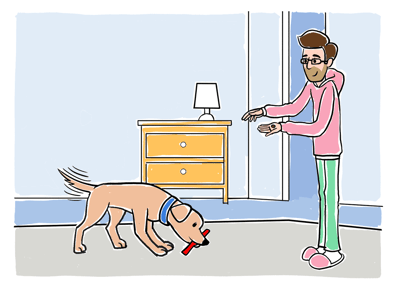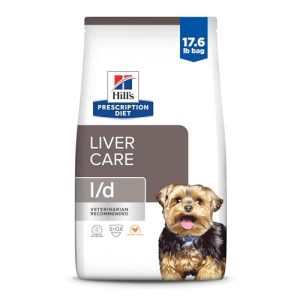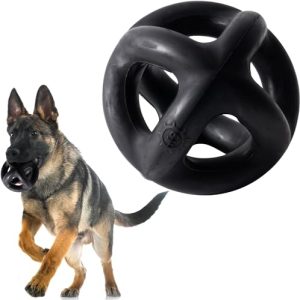Getting your dog to play with toys can sometimes feel like a challenge. You’ve bought the toys, but your furry friend just looks at them or wanders away.
If you want to see your dog excited, active, and happy with their toys, you’re in the right place. You’ll discover simple, effective ways to spark your dog’s interest and turn playtime into a favorite part of the day. Keep reading—you’re about to unlock the secrets that make dogs love their toys!
Choosing The Right Toys
Choosing the right toys is key to getting your dog excited about playtime. Not all toys suit every dog, so understanding what fits your pet’s personality and needs makes a big difference. A well-chosen toy can turn a shy or uninterested dog into a playful companion eager to engage.
Types Of Dog Toys
Dogs enjoy different types of toys depending on their play style and energy levels. Chew toys satisfy dogs who love to gnaw, while fetch toys like balls and frisbees are perfect for active dogs that love running. Puzzle toys challenge your dog’s brain and keep them busy when you’re not around.
- Chew toys:Durable and tough, great for teething puppies and heavy chewers.
- Fetch toys:Lightweight and easy to throw, ideal for outdoor play.
- Puzzle toys:Interactive, they stimulate mental activity and problem-solving.
Material Matters
The material of a toy affects its durability and safety. Rubber toys are flexible and gentle on teeth, while nylon toys offer long-lasting toughness for aggressive chewers. Soft plush toys can be comforting but may not hold up for dogs that chew hard.
Think about your dog’s chewing strength and habits. Does your dog shred soft toys in minutes? Then avoid plush. Does your dog need something gentle on sensitive teeth? Rubber might be your best bet. Your choice will protect your dog’s teeth and keep them entertained longer.
Size And Safety
Picking the right size toy prevents choking hazards and frustration. A toy too small can be swallowed, while a toy too large might be hard to carry or chew. Always choose a size that fits comfortably in your dog’s mouth without causing strain.
Safety also means checking for loose parts or sharp edges. Regularly inspect toys for wear and tear and replace them as needed. Have you ever seen how quickly a dog can rip apart a toy that’s not sturdy enough? Avoid that risk by selecting well-made toys designed for your dog’s breed and size.
Introducing Toys To Your Dog
Introducing toys to your dog is the first step in encouraging play. Dogs may not immediately show interest in toys. Patience and gentle guidance help them learn to enjoy playtime. Start with simple toys and observe your dog’s reactions. Use positive experiences to build excitement around toys.
Making Toys Appealing
Choose toys with bright colors and interesting textures. Soft squeaky toys or balls often catch dogs’ attention. Move the toy slowly in front of your dog to spark curiosity. Let your dog sniff and explore the toy at their own pace. Rotate toys regularly to keep them fresh and exciting.
Using Treats And Praise
Pair toys with tasty treats to create a positive link. Reward your dog when they touch or hold the toy. Use calm, happy words to encourage your dog’s interest. Praise builds confidence and makes playtime enjoyable. Treats and praise help your dog associate toys with fun.
Timing Play Sessions
Choose times when your dog is alert but not tired. Short, frequent play sessions work best for most dogs. Avoid playtime right after meals or late at night. Watch your dog’s energy levels to find the best moments. Consistent play sessions help your dog expect and enjoy toy time.
Encouraging Play Behavior
Encouraging play behavior in dogs helps them stay active and happy. Playtime also builds trust between you and your pet. Some dogs need extra motivation to enjoy toys. Patience and fun techniques help your dog learn to play.
Interactive Play Techniques
Use toys that invite your dog to join the fun. Tug ropes and fetch balls work well. Move the toy slowly to catch their attention. Praise your dog with a happy voice when they engage. Keep sessions short to avoid boredom. Change toys often to keep interest high. Play on the floor where your dog feels safe.
Using Toys To Bond
Hold the toy and encourage your dog to take it. Let them win during tug-of-war to boost confidence. Play gentle fetch games to show love and care. Use toys during quiet time to create calm moments. Your calm energy makes your dog feel secure. Smile and talk softly to deepen your connection. Sharing toys makes your dog trust you more.
Managing Playful Energy
Offer physical activities before toy time to burn excess energy. A tired dog enjoys playing with toys more. Schedule regular exercise like walks or runs daily. Use toys that challenge your dog’s mind, like puzzle toys. Rotate toys to keep your dog curious. Avoid forcing play; let your dog choose when to start. Calm energy encourages focused and joyful play.

Credit: rockykanaka.com
Overcoming Common Challenges
Getting a dog to play with toys can sometimes be tricky. Some dogs show little interest, while others may react aggressively. These challenges can stop playtime from being fun and safe. Understanding common problems helps create a better play experience.
Dealing With Disinterest
Some dogs ignore toys because they do not find them exciting. Try different types of toys like soft, squeaky, or chewable ones. Move the toy around to catch your dog's attention. Use treats or praise when your dog interacts with a toy. Short play sessions often work better than long ones.
Addressing Toy Aggression
Toy aggression means your dog guards toys or growls when others come close. Never punish your dog for this behavior. Teach your dog to share by swapping toys for treats. Create safe play zones where your dog feels comfortable. Consult a trainer if aggression gets worse.
Keeping Toys Fresh
Dogs lose interest in toys they see every day. Rotate toys by putting some away for a while. Introduce new toys alongside old favorites. Clean toys regularly to keep them smelling fresh. Change play locations to make playtime more exciting.
Maintaining Toy Interest
Keeping your dog interested in toys can be a challenge. Dogs often lose interest if the toys become too familiar or boring. Maintaining their curiosity helps encourage regular play and exercise. It also strengthens the bond between you and your dog. Simple strategies can keep toys exciting and fun for your furry friend.
Rotating Toys Regularly
Switching out toys every few days keeps them fresh and exciting. Keep some toys hidden while others are available. Rotate them to spark your dog’s curiosity. This prevents boredom and encourages your dog to explore different toys. Rotating toys also helps your dog focus on playtime.
Incorporating New Games
Introduce new ways to play with the toys. Use fetch, tug-of-war, or hide-and-seek games. Change the way you interact with the toy to keep things interesting. New games challenge your dog’s mind and body. This variety helps maintain excitement and encourages active play.
Rewarding Playtime
Give your dog praise or treats during play sessions. Positive reinforcement makes playtime enjoyable and motivating. Reward your dog for engaging with toys or trying new games. This builds a positive connection with play. Rewards encourage your dog to return to toys happily.
:strip_icc()/train-your-dog-to-release-1117304_1211-09a313a5469d49fc9596f19d6d408722.jpg)
Credit: www.thesprucepets.com

Credit: www.ellevetsciences.com
Frequently Asked Questions
How Do I Choose The Right Toy For My Dog?
Selecting the right toy depends on your dog’s size, age, and play style. Consider durable toys for aggressive chewers and interactive toys for mental stimulation. Always supervise playtime to ensure safety and prevent choking hazards. Regularly check toys for wear and replace them when necessary.
Why Won’t My Dog Play With Toys?
Your dog might be uninterested due to boredom, age, or health issues. Try rotating toys to keep things exciting. Introduce toys with treats inside for added motivation. Ensure your dog feels comfortable and relaxed during playtime. Consult a vet if you notice any behavioral changes.
How Can I Make Toys More Appealing?
To make toys more appealing, incorporate treats or scents your dog likes. Engage in interactive play, such as tug-of-war or fetch, to build interest. Rotate toys regularly to maintain novelty. Positive reinforcement when your dog plays with toys can also increase their appeal.
What If My Dog Prefers Human Interaction?
If your dog prefers human interaction, incorporate play into their routine. Use toys during your playtime together, such as fetch or tug-of-war. Gradually introduce solo play with treats or interactive toys. Building a routine helps balance human interaction and independent play.
Conclusion
Getting a dog to play with toys takes patience and fun. Try different toys to find what your dog likes best. Play together often to keep your dog interested. Praise your dog when it plays nicely. Keep the play sessions short and happy.
Toys can help your dog stay active and healthy. Enjoy these moments—they build a strong bond. With time, your dog will love playing with toys. Keep trying, and have fun!

Emily Barker is the founder of ChillDogLife.com, a space dedicated to helping pup parents discover the best dog products, lifestyle tips, and cozy ideas for happier homes.
A lifelong dog lover, Emily combines her passion for pets with a knack for research to share trusted recommendations on everything from toys and furniture to health and everyday care.
Her goal is simple: to make life easier, stylish, and more joyful for dogs and the people who love them.







